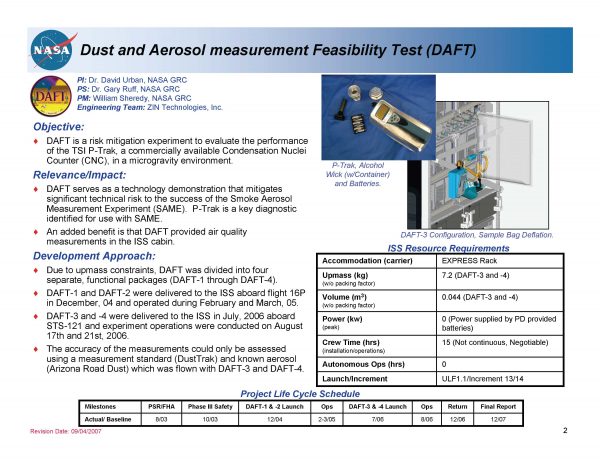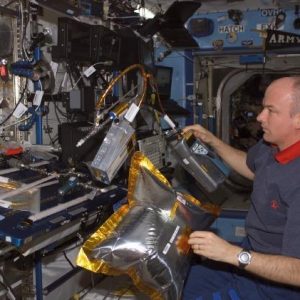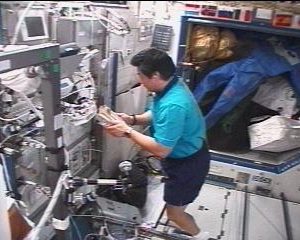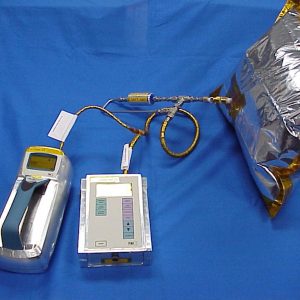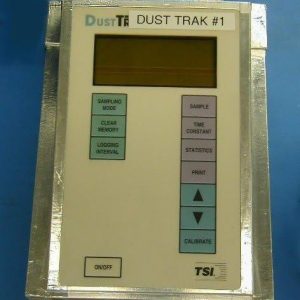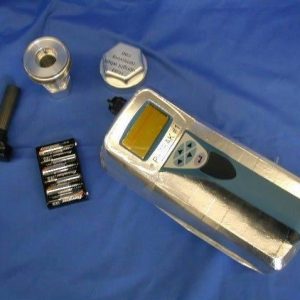DAFT
Dust and Aerosol Measurement Feasibility Test (DAFT)
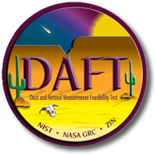
The Dust and Aerosol Measurement Feasibility Test (DAFT) was designed to ensure that a modified P-Trak—a key component of the forthcoming NASA Smoke Aerosol Measurement Experiment (SAME)—will perform properly in the unique environment of microgravity. If the P-Trak performs as expected, the device will be used in SAME to provide data that will help scientists design better fire detectors for future, longduration, manned missions.
Our understanding of how fires burn in a spacecraft has evolved since the fire detection equipment on space shuttle and space station was developed. One thing we have learned is that smoke particles that form in microgravity can be larger than those formed on Earth. Since smoke detectors are gauged to detect certain sizes of particles, this knowledge could help design more accurate smoke detectors for future spacecraft. The Smoke and Aerosol Measurement Experiment (SAME) is planned to gather particulate size information on ISS. The DAFT experiment, which was initiated after the Columbia accident, is to be used to obtain data in preparation for SAME using very little upmass.
DAFT is intended to assess and characterize the distribution of particles in the air inside ISS to allow assessment of the suitability of current shuttle and ISS smoke detectors. This experiment was begun on Expedition 10 and is planned for completion during Expedition 13. DAFT is designed to test the effectiveness of the PTrak Ultrafine Particle Counter, a device that counts ultra-fine dust particles in a microgravity environment. Most particle counters work by using a laser to record instances when the beam is interrupted; however, this method will not record ultra-fine particles that are much smaller than the wavelength of the light. P-Trak works by passing dust-laden air through a chamber of vaporous isopropyl alcohol. When a droplet of alcohol condenses over an ultra-fine dust particle, the particle becomes large enough to break the light beam and be counted. The alcohol is then recycled as it condenses on sidewalls and gravity pulls the alcohol back to the saturator. If the results are satisfactory, P-Trak will be used in SAME, which requires counts of particles ranging from 0.2-1 micron.
ISS Science for Everyone
Science Objectives for Everyone
The Dust Aerosol Measurement Feasibility Test (DAFT) releases particles in the International Space Station (ISS) atmosphere to test the ability of different equipment to measure the levels of dust and air quality.
Science Results for Everyone
Little is known about the size of soot particles in space, which makes it hard to design accurate fire detectors for spacecraft. This experiment measured particle sizes aboard International Space Station (ISS) and tested a hand-held commercial detector. Data indicated low levels of particulate in ISS relative to Shuttles – not surprising given ISS’s smaller crew size and its filtration system. Results show average particle sizes are larger on orbit than on Earth, perhaps due to inefficiency of the spacecraft’s filter. Knowing the median particulate level throughout ISS will help design better smoke detectors capable of distinguishing normal dust from dangerous smoke particles.
Applications
Space Applications
Extended duration space flight missions with larger vessels will require fire detection systems with increased reliability and sensitivity. In order to provide the data required for that development, SAME needs to utilize the DAFT experiment to provide mitigation against the risk that the P-Trak may not be able to provide the required data.
Additionally, in the event that the experiment is successful, it may be possible to use these devices to provide more detailed information about the character of the particulate in the atmosphere aboard the ISS.
Earth Applications
The smoke detectors developed from the results of SAME can also be useful in other extreme environments on Earth, such as submarines or underwater laboratories. Accurate detection of smoke in these environments can save lives.
Operations
Operational Requirements and Protocols
Since they have no external power requirements, DAFT-1 and DAFT-2 can be operated almost anywhere (where the release of small amounts of alcohol is permitted) within the ISS. Downlinking is performed using a program supplied by the project and installed onto an EXPRESS computer. Three test points can be accomplished by a single crew member in 80 minutes.
DAFT-3 and DAFT-4 needs ISS gaseous nitrogen and therefore require an active nitrogen source, and safety restraint for the fill device. Test point time increases by 15 minutes per point.
The crew member simply assembles the test set up from the included packages, turns the devices on and waits 6 minutes for operation, noting average readings and/or anomalies. Sensitivity to the alcohol content of the atmosphere on board the ISS limits usage of the P-Trak to a maximum of three test points per day. For DAFT-3 and DAFT-4 precautions regarding overfilling the sample bag and preventing potential hose whip exist.
Related Documents
Currently updating…
Publications
Currently updating…
Gallery
Contact Information
PI: Dr. David Urban, NASA GRC
PS: Dr. Gary Ruff, NASA GRC
PM: William Sheredy, NASA GRC
Engineering Team: ZIN Technologies, Inc.

